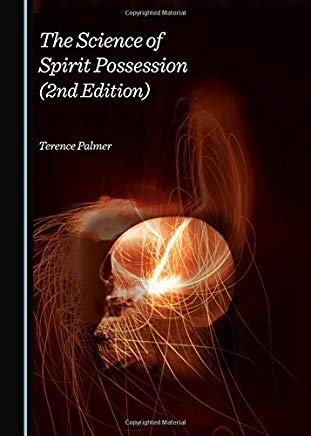

The Science of Spirit Possession (2nd Edition)
By
Terence Palmer
Reviewed by Henry Reed, Ph.D.
What is it "they" say? "The more extravagant the claim, the more extravagant the required proof!" Perhaps the most extravagant example of "things psychic" would be "spirit possession." Not only do you lose control of your mind, but someone else uses it for their own purposes--it's like soul robbery! Is there really such a thing as spirit possession? William Blatty's The Exorcist certainly gave a spellbound interpretation of what it might be like, exciting or terrorizing folks' imagination. Is spirit possession really something--is it something real, or is it the product of the imagination of a sick mind? Debunking the phenomenon would be one way of dealing with the intense anxiety that the concept stirs up in us. So easy to dismiss... the product of an overactive imagination and a great need for attention... whew, we can relax, nothing to worry about. ZAP! Wrong! Extravagant proof to the contrary of what we might wish for our own peace of mind, spirit possession does exist. It has its extravagant written manual to back it up, although it does require a bit of alteration in how we usually think about things.
Terence Palmer's book, or should I say manual, The Science of Spirit Possession, represents the extravagant evidence to support the extravagant claim that spirit possession does exist. For its 400 pages, it is heavier than it would appear, but which becomes obviously reasonable once you pick it up to start reading. The book began as a doctoral thesis, with the author's search and review of an enormous body of literature, case studies, and research on the topic that had to stand up to scrutiny from a faculty board not disposed to approve of such topics. With the weight of the evidence, however, the author concludes that "spirit possession is a scientifically verifiable fact as well as a subjective reality in the lives of many people." It requires those 400 pages to explain what he means, what he doesn't mean, and it why it matters. It does matter, not merely for the sake of therapists who wish to help folks caught in the phenomenon, but even more so because it illuminates a significant, yet hidden, even invisible, reflection of a significant dimension of our relationships with one another.
The author believes he has found a breakthrough approach to the quandry concerning the reality of spirit possession. He bases this approach on one of the earliest researchers and theorists concerning anomalous states of consciousness, Frederick C. Myers (1843-1901. Myers was one of the founders of the Society for Psychical Research. Arthur Conan Doyle was a contemporary and also a member. Their work used the metaphor of the "subliminal self," rather than the later metaphor, from psychoanalysis, of the "unconscious." It is from this difference in originating, or foundational metaphor, that Myers' approach comes up with a difference vision of spirit possession than what is derived from psychonalysis. While the latter concludes that possession is not "real," but an imaginative construction of the patient, Myer's approach lends itself to a more transpersonal understanding of the processes involved.
Key to this new understanding is the phenomenon of "telepathic hypnosis," something Myers and his colleagues discovered, proved, and incorporated into their thinking. In telepathic hypnosis, one person's suggestions affect another person's experiences without that person realizing it was coming from a telepathic source. Understanding how suggestion operates, through the effectiveness of the person's imagination, proves sufficient to provide an understanding of how this effect manifests itself in the receiver. The next step is to take a "quantum" view, or a new transpersonal view of what might be considered a spirit, or the source of spirit possession. This point of view might seem paradoxical, how can something be both "real" and "created via the imagination"? Ideas have consequences, as they contain their own energy. Individuals themselves may be significant only in that they become mediums for ideas, or patterns of energy interactions.
The motivation of the book has to do with "spirit releasment therapy." Having to justify the therapy, prove that the spirits are real, and so on, was the source of the motivation. He writes that anyone who has experienced spirit possession and spirit releasement therapy knows for a fact that it is real. The psychoanalytic position has zero credibility among the experiencers. The alternative point of view, started by Myers, but developed over the decades, honors the experiential reality while providing an intellectual basis that has a lot to contribute to our evolving understanding of consciousness.
From the Publisher, Cambridge Scholars Publishing
Terence Palmer has a degree in Psychology from Canterbury Christ Church University and a Master's degree in the study of Mysticism and Religious Experience from Kent University. He has been a hypnotherapist for 20 years and a spirit release practitioner for 12 years. His doctorate was awarded by the University of Wales at Bangor for his thesis on the scientific conceptual framework and research methods of nineteenth-century researcher F.W.H. Myers. He is the first practitioner to be awarded a PhD on the topic of Spirit Release Therapy in the UK. Terence is a member of The Society for Psychical Research and The Scientific and Medical Network, and he is a Fellow of the Royal Society of Medicine. Dr Palmer is an active lecturer in encouraging UK institutions to take up the challenge to test the efficacy of Spirit Release Therapy under controlled conditions.